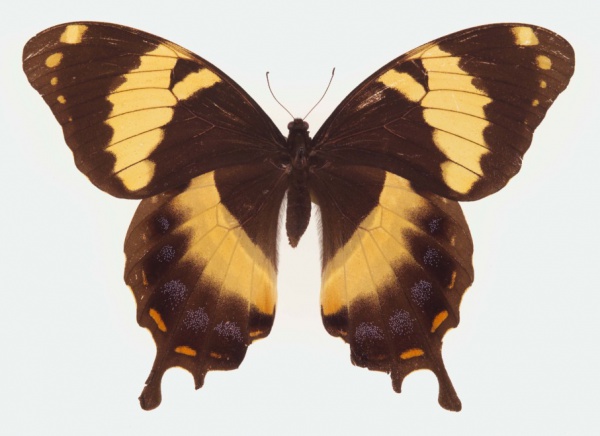Facts About Papilio homerus
The Homerus Swallowtail, scientifically known as Papilio homerus, holds the distinction of being the largest butterfly in the Western Hemisphere, and it is found exclusively in Jamaica. Tragically, this magnificent butterfly is endangered, with only two small populations remaining in a fraction of their original habitat.
Named after the renowned Greek poet Homer, the Homerus Swallowtail serves as a symbol of national pride for Jamaica, featuring prominently on postal stamps and currency. However, it faces numerous threats such as habitat destruction and illegal collection, which have contributed to its endangered status, as recognized by the International Union for Conservation of Nature (IUCN).
Visually, the Homerus Swallowtail is breathtaking. It exhibits brown-black wings adorned with a prominent yellow band and striking blue and red spots. Females tend to be larger than males, with a wingspan reaching up to 15 cm. Unfortunately, there is still much to learn about their behavior, which complicates the development of effective conservation strategies.
These butterflies are native to the Neotropical rainforests of Jamaica but are now confined to three small populations in the central, eastern, and western parts of the island. They face significant challenges, including habitat destruction, human interference, and climate change. Conservation efforts include legal protections, research on population dynamics, and initiatives to safeguard their habitats.
The life cycle of the Homerus Swallowtail encompasses stages from eggs, larvae, and pupae to adults. The larvae have evolved unique mechanisms to evade predators, while adults are frequently observed feeding on nectar and displaying territorial behavior. Observations have also revealed insights into their mating behavior and migration patterns.
The species is perpetually threatened by parasitoids, predators, and habitat loss. Conservation initiatives focus on protecting the remaining populations and their habitats through various strategies, including establishing refugium populations and raising public awareness about the butterfly's endangered status. Human activities driving habitat destruction remain the largest challenge they face.
